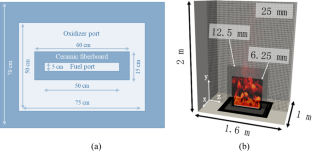Exploratory Study of the Impact of the Turbulence Model on Flame Extinction with an EDM and EDC/Finite-Rate Approach for a Line Burner Configuration
Abstract
The paper presents large eddy simulations of a turbulent line burner and studies the influence of turbulence modelling, for various levels of flame extinction. The classical Smagorinsky model, as well as a static and dynamic version of a one-equation model are applied to model sub-grid scale turbulence. Within this context, two different combustion models are considered: the eddy dissipation model (EDM) with infinitely fast chemistry and the eddy dissipation concept (EDC) with simplified finite-rate chemistry. The model assessment is made through comparison to experimental data by considering both first and second order statistics. For the cases without extinction, the results indicate that the use of the dynamic one-equation turbulence model performs poorly with either of the combustion models. The analysis suggests that the dynamically determined turbulence model parameters have a significant effect in the mixing time scales and the resulting reaction rates. For the extinction cases, the use of EDC with finite-rate chemistry is able to predict fairly well the combustion efficiency in conditions far from extinction and during complete extinction. The onset to flame extinction is predicted less satisfactorily, with the discrepancies attributed to radiation modelling and the use of a simplified reaction mechanism.


 求助内容:
求助内容: 应助结果提醒方式:
应助结果提醒方式:


